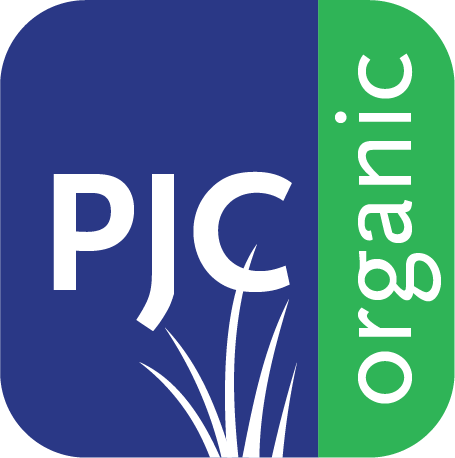Crabgrass (Digitaria spp.) and goosegrass (Eleusine indica) are two common summer annual weeds that plague lawns, athletic fields, and turfgrass areas. Although they appear similar, correctly identifying them is essential for proper organic weed management.
What is Crabgrass?
Crabgrass germinates in spring when soil temperatures reach about 55°F. It thrives in sunny, compacted, and poorly managed turfgrass environments. Crabgrass often appears along lawn edges, walkways, and driveways where turf is thin or damaged. In response, to manage crabgrass organically: mow high, judiciously water, aerate compacted areas, and overseed with a turf type tall fescue dominant blend. The two varieties of crabgrass are detailed below…
Smooth Crabgrass (aka Small Crabgrass)
Characteristics of Smooth Crabgrass:
- smooth, light green leaf surface
- mature plants are red at the base
- summer annual lifecycle: germinates spring, grows summer, seeds fall, dies winter
- tolerates low mowing height

Hairy Crabgrass (aka Purple Crabgrass or Large Crabgrass)
Characteristics of Hairy Crabgrass:
- Summer Annual Lifecycle: germinates in the spring when soil temps remain around 55°F, grows summer (competing with turf), seeds fall, die with 1st frost.
- spiky seed head, flat and narrow seeds
- dense hairs on leaves and stems
- fibrous root structure
- flat or oval stem

What is Goosegrass? (aka Indian Goosegrass, Wiregrass, Silver Crabgrass, Crow’s Foot)
Goosegrass usually germinates 2–3 weeks later than crabgrass, once soil temperatures reach about 60°F. It is commonly found in compacted soils, high-traffic areas, and places with thin turf.
Characteristics of Goosegrass:
- thrives in moist, fertile, compacted, sandy soil
- likes full sun
- bud is white-silver color
- stems divide from the center sprout
- hairy at base of leaf
- summer annual
- flat or oval stem
- branched, spiky seed head

Goosegrass is adaptable to a wide range of site conditions and can do well in nutrient deficient soil, dry soils, landscape beds and turf stands. Its smooth blade structure makes for a very poor playing surface on athletic fields because it impacts ball rolling and foot traction. A tall turf stand is essential in managing goosegrass due to its low growth habit.
Organic Management of Crabgrass and Goosegrass
Proper turf care is the first step in preventing weed infestations. Here’s how you can suppress both types of grass organically:
Cultural Practices
- Mowing: Keep turfgrass mowed at 3.5 inches to shade out weed seedlings.
- Watering: Deep, infrequent irrigation encourages strong turfgrass roots.
- Aeration: Alleviate compaction and improve soil structure.
- Overseeding: Fill in bare patches to crowd out potential weed growth.
Organic Weed Management Tips
- Apply organic pre-emergent products in early spring before germination.
- Maintain healthy soil biology with organic fertilizers.
- Use manual pulling for small patches of established weeds.
- Focus on soil health to build long-term turf resilience.
Proper identification of crabgrass and goosegrass is key to controlling them organically. With proactive lawn care, consistent mowing, and improved soil health, you can maintain a thick, green lawn that resists these persistent summer weeds. Additionally, for more information weeds, view our blogs: “5 Common Summer Weeds That Thrive in Wet Soil” & “Managing Summer Weeds Starts with Soil Health“.
